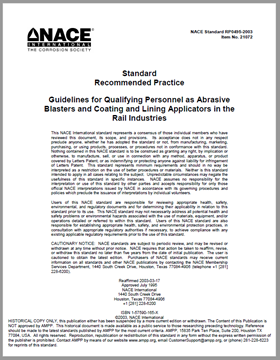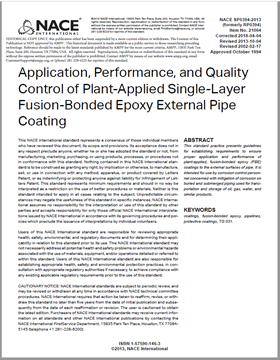Sulfide stress cracking (SSC) of metals exposed to oilfield environments containing hydrogen sulfide (H2 S) has been recognized as a materials failure problem for more than 35 years. Laboratory data and field experience have demonstrated that extremely low concentrations of H2 S may be sufficient to lead to SSC failure of susceptible materials. In some cases, H2 S can act synergistically with chlorides to produce corrosion and cracking failures. However, laboratory and operating experiences have also indicated to materials engineers the optimum selection and specification of materials having minimum susceptibility to cracking. Although this standard focuses primarily on SSC failures, other failure modes (e.g., blistering, stepwise cracking, chloride stress corrosion cracking [SCC), pitting corrosion, weightless corrosion, etc.) must also be considered when selecting materials for use in sour (H 2 S-containing) environments.
The need for better understanding of the variables involved in SSC of metals in oilfield environments and better correlation of data has become apparent for several reasons. New design requirements by the oil and gas production industries call for higher strength materials which, in general, are more susceptible to SSC than the lower strength alloys. These design requirements have resulted in extensive development programs to obtain more resistant alloys and/or better heat treatments. At the same time, users in the petroleum refining and synthetic fuels industries are pushing present materials much closer to their mechanical limits…
…This document, issued by NACE under the auspices of Group Committee T-1 on Corrosion Control in Petroleum Production, is directed toward the testing of metals for resistance to cracking failure in aqueous environments containing H2S. It must be emphasized that the sole purpose of the test method is to facilitate conformity in testing so that data accumulated from different sources may be compared on an equal basis. This document is also intended to be comprehensive in its content of test methods commonly used to evaluate materials for H2S service. It contains methods for testing metals using the following types of specimens: (a) tensile, (b) bent beam, (c) C-ring, and (d) double cantilever beam (DCB). When possible, existing standard test methods were incorporated, thereby creating a comprehensive test method document for testing metals for resistance to failure in H2 S-containing environments.
Interpretation of stress corrosion test results is a difficult task. The test methods contained herein are generally conceded to be severe, with accelerated tests making the evaluation of the data extremely difficult. In testing the reproducibility of the test methods among different laboratories, several undesirable side effects, natural with many accelerated tests, must be noted:
The test environment may cause failure by stepwise cracking and blistering. This is especially true for lower strength steels not usually subject to SSC. The presence of stepwise cracking may be detected by visual and metallographic observations. Blistering is normally visible on the specimen surface. (For further information regarding this phenomenon, see NACE Standard TM0284 Historical Document 1990




